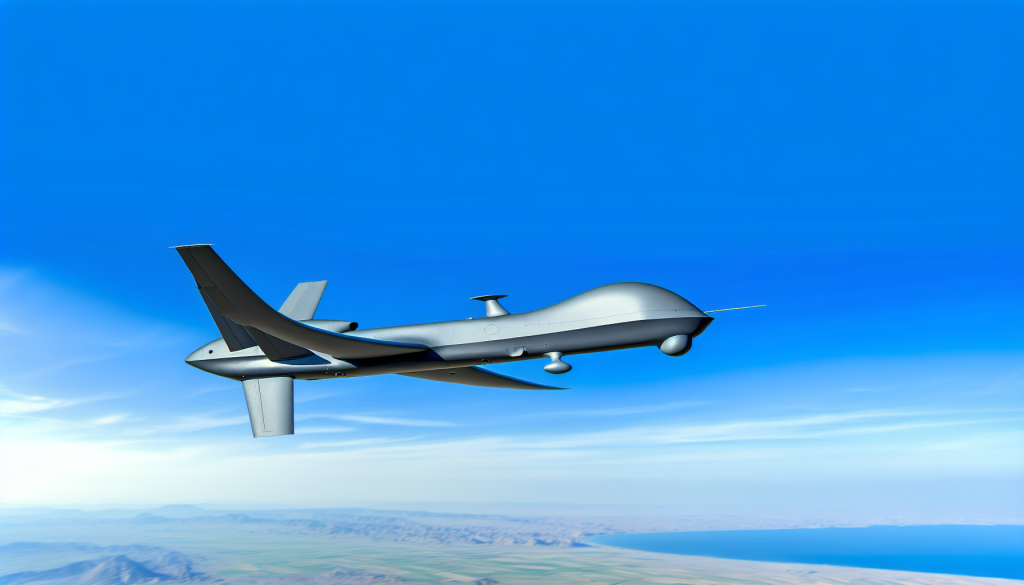China’s GJ-11 Sharp Sword: A Leap in Autonomous Drone Technology
As the United States scrambles to assert air superiority in the Indo-Pacific theater, China may have just taken a significant leap forward. Satellite images captured between August and September 2025 reveal China’s GJ-11 Sharp Sword, a stealthy new uncrewed combat air vehicle (UCAV), stationed at Shigatse Air Base in Tibet. This development is noteworthy not only for its implications in Sino-American military dynamics but also for its potential impact on regional security in Asia.
Strategic Location and Implications
The presence of the GJ-11 at Shigatse Air Base raises eyebrows due to its proximity to the Indian border, at just 93 miles away. The air base itself has been a long-standing point of contention between China and India, making the deployment of this advanced UAV (unmanned aerial vehicle) particularly provocative. Should the Sharp Sword indeed be operational, it could play a crucial role in China’s military aspirations, including its ongoing plans regarding Taiwan. For other nations, especially the U.S. and India, the operational status of the GJ-11 emphasizes the need to bolster air power in the Indo-Pacific to deter potential conflict.
Development and Capabilities
The GJ-11 has been in development for over a decade, with the latest iteration reportedly capable of performing a range of military functions. Equipped for reconnaissance, surveillance, and air-to-surface strikes, the GJ-11 embodies cutting-edge military technology. The drone’s unique tailless, flying-wing design optimizes stealth and maneuverability while maintaining a gray color scheme that is typical of Chinese combat drones.
Reportedly capable of reaching subsonic speeds of up to 690 miles per hour, the GJ-11 features integrated bays for precision-guided bombs, enhancing its capability for targeted strikes. As a consequence, experts regard the drone as particularly strike-oriented, especially given that “GJ” stands for “gōngjí,” or “attack” in Chinese.
Autonomy and Artificial Intelligence
Chinese media outlets suggest that the GJ-11 possesses a high degree of autonomy. Automation algorithms may potentially handle its takeoff, landing, and execution of missions with minimal human oversight. Such capabilities raise exciting possibilities for coordinated maneuvers, allowing the GJ-11 to function in unison with other drones in a squadron formation. The potential for one or multiple GJ-11s to act as “wingmen” for crewed jets—such as the J-16 or J-20S—highlights a shift toward integrating unmanned systems into traditional piloted operations.
However, skepticism exists outside China regarding the true extent of the GJ-11’s autonomy. While some experts acknowledge its advanced automation, they caution against assuming it has reached the level of operational independence Chinese state media report.
Future Warfare and Maritime Potential
Speculations also suggest that adaptations to the GJ-11 may allow for its deployment on naval platforms, including aircraft carriers such as the Type 076 Sichuan—dubbed a “drone carrier.” If confirmed, this capability would mark a significant advancement, making China among the first to implement a ship-based stealth drone. Such a development would provide China with a robust edge in both air and maritime warfare, heightening tensions in the region.
The U.S., for its part, is taking a different approach to unmanned combat technology. Instead of developing its own flying-wing UCAVs, American military officials are focusing on Collaborative Combat Aircraft (CCAs). These systems will work alongside manned fighter jets, creating human-machine teams aimed at enhancing capabilities without solely relying on autonomy.
Strategic Implications for the U.S. and Allies
David Allvin, chief of staff of the Air Force, stated that while they are open to the concept of a flying wing-type UCAV, their current focus is on developing CCAs to augment manned aircraft. This strategy reflects a divergence from the autonomous approach that the GJ-11 embodies, as the U.S. military aims to foster human oversight in combat scenarios.
Yet, the advancements showcased by the GJ-11 raise pressing questions. Will the U.S. strategy of emphasizing human control effectively counter the rapid advancements seen in Chinese autonomous weapons? The landscape of aerial warfare is shifting, and how nations respond to threats posed by drones like the GJ-11 will shape the security dynamics of the Indo-Pacific for years to come.
In summary, the emergence of the GJ-11 Sharp Sword highlights an important development in aerial combat technology, illustrating not only China’s growing military capabilities but also the strategic shifts occurring in response to these advancements. As the world watches, the implications of this new era of drone warfare are profound, with the potential to redefine modern military engagements on a global scale.

